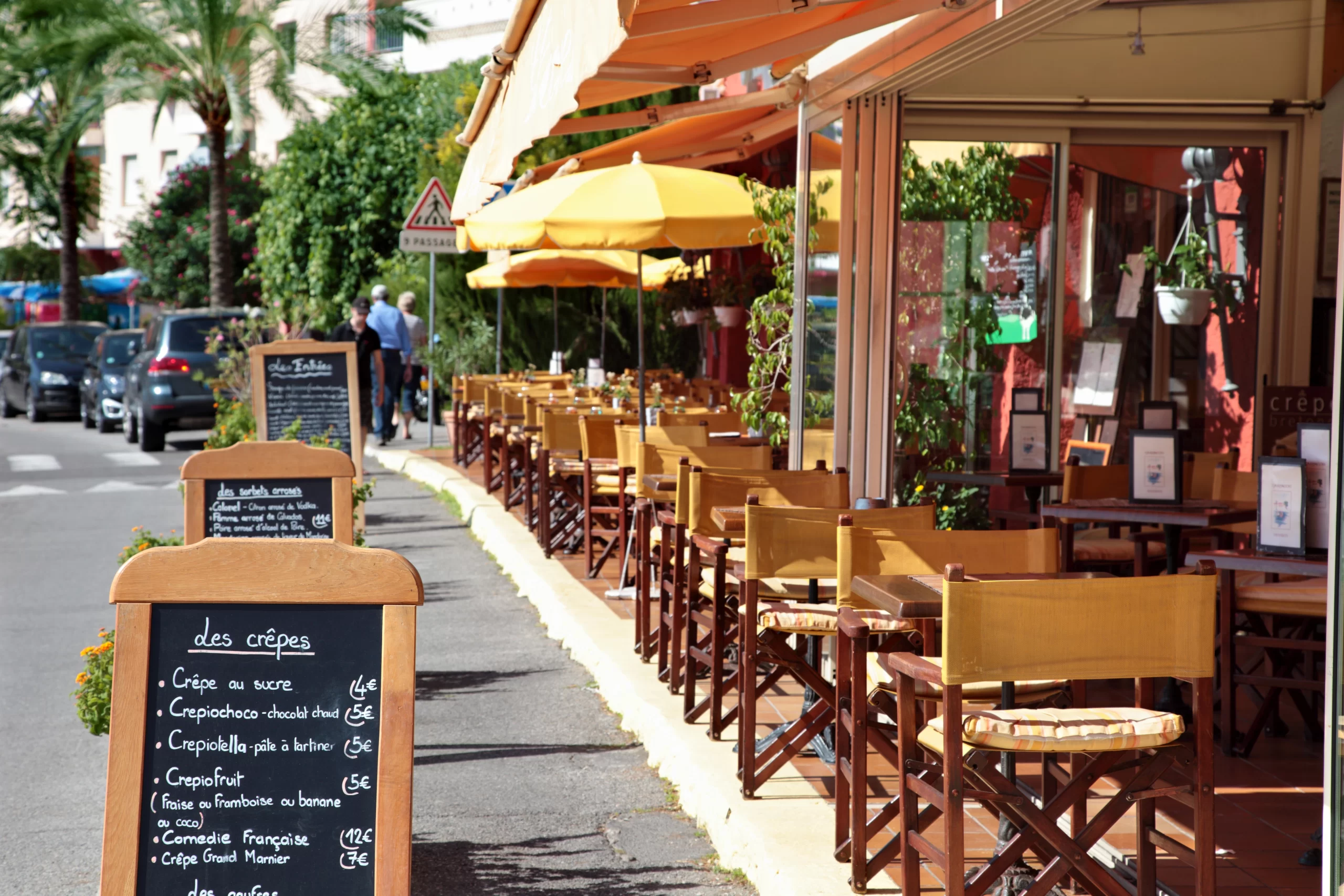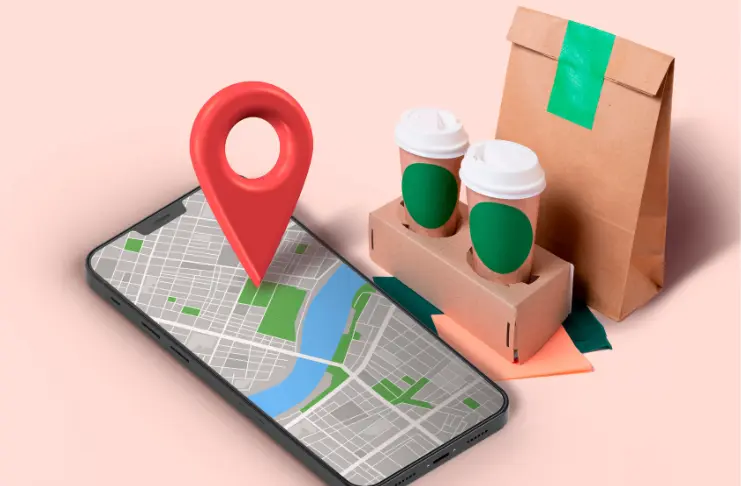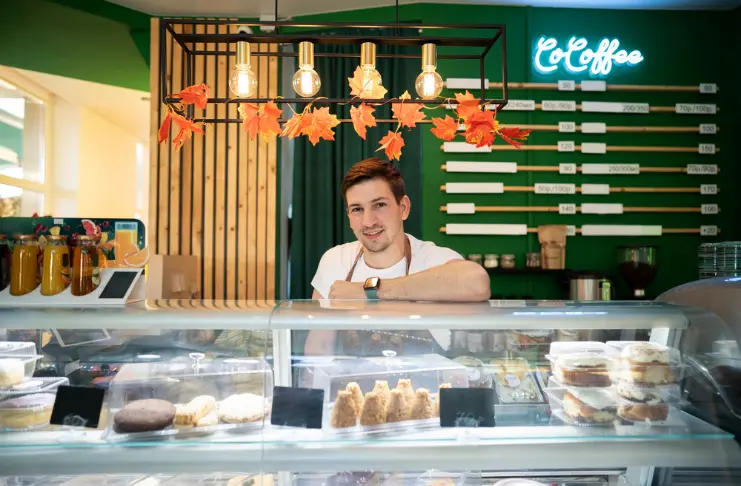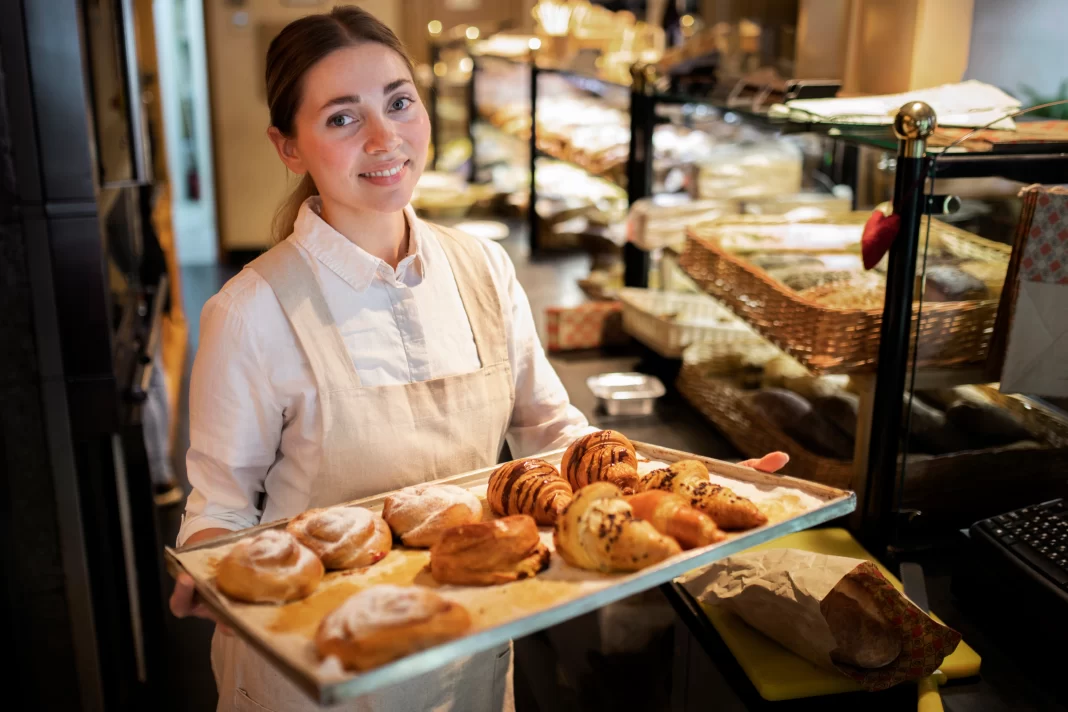A great location for a bakery directly impacts its daily footfall, operating costs, customer loyalty, and long-term viability. A well-placed outlet sees steady walk-ins, builds a repeat base, and justifies overheads. A poorly chosen one struggles regardless of product quality or service.
This guide outlines the key factors to evaluate when selecting a location for bakery business, what to avoid, and which factors matter most for profitability. Whether you’re opening your first outlet or expanding, this is a location strategy built for results.
Why Does Location Matter So Much in the Bakery Business?

A bakery thrives on impulse purchases and routine visits. That means it needs to be seen, accessed easily, and positioned where high foot traffic and demand already exist. Unlike restaurants that may justify a destination model, bakeries depend on convenience. If the location doesn’t support frequent traffic (either foot, residential, or commercial), you’ll struggle, no matter how strong your product line is.
The location also determines operating costs. High rent with low conversion kills margins. On the other hand, cheap rent in an invisible corner stalls growth. The balance is in choosing a spot where traffic, demand, and rent align.
Customer type, time of day, and product mix all tie back to location. Selling premium cakes or other baked goods in a low-income pocket won’t work, nor will bulk bread in a business district. Your location should reflect the purchase behavior you’re targeting.
What to Consider When Selecting the Location for a Bakery Business?

Every bakery format needs a different kind of space. A sit-down café isn’t built for the same location as a takeaway counter or a high-volume production unit. What matters is how well the location supports your operations, employees’ cost structure, and customer access.
The goal here isn’t just visibility but conversion. Can the people passing by afford your products? Can they stop easily? Will they come back? If not, you’re burning rent.
Location also ties directly to logistics. You need clear access for staff, deliveries, and maintenance. If the layout or neighborhood creates friction, daily operations suffer. On paper, a site may look promising. On the ground, it may fail in terms of noise, waste management, or legal zoning.
So, what factors must you consider when conducting market research and selecting a location for a bakery business? Here are the core ones:
1. Trade Area Viability
Not every high-traffic zone is commercially viable. What matters for a successful bakery business is the spending power and lifestyle habits of the immediate population. Mid-income households with repeat snacking behavior, dense office clusters, and young family neighborhoods typically yield stronger conversion rates for bakeries.
Here, the economic resilience of the area becomes the key. Why? Neighborhoods with diverse employment sectors tend to withstand economic fluctuations better than single-industry zones. That means you won’t go completely out of business even during downturns.
INDUSTRY INSIGHT
| The global bakery market is projected to reach USD 84.83 billion by 2033, growing at a CAGR of 2.4% from 2025 to 2033. This growth is driven by increasing consumer demand for convenient, diverse, and health-conscious baked goods. When selecting a bakery location, consider areas where the population’s lifestyle and spending habits align with these market trends. Neighborhoods with a high concentration of health-conscious consumers, such as those near fitness centers or organic markets, may offer a receptive customer base for bakeries specializing in healthier options. Also, urbanization and changing eating habits have increased the consumption of ready-to-eat bakery products. Therefore, bakeries offering quick, on-the-go items can benefit from locations in bustling urban centers or near transit hubs, where convenience is a priority. Aligning your bakery’s location strategy with these evolving consumer preferences and market dynamics is essential for tapping into the growing demand and ensuring long-term success. |
2. Visibility and Street Positioning

Corner units, intersections, and eye-level storefronts generate better passive reach. If your bakery is hidden behind signage clutter, stairs, or parking lots, you’re losing the impulse-driven buyer.
Locations visible from multiple directions capture more attention than those seen only from one. Wider storefront frontages further create a stronger visual impact. Buildings with distinctive features or corner positioning naturally draw attention in busy commercial areas.
Mind that some locations restrict signage size, illumination, or projection, and these limitations may impact your bakery’s street presence. So, choose the location wisely.
Finally, since bakeries sell through visual appeal, prioritize locations with ample window space for product displays that create 24/7 marketing opportunities.
3. Nearby Demand Drivers
Schools, corporate parks, clinics, metro stations, and fitness centers drive predictable peaks in foot traffic. The closer your bakery is to these demand centers, the more control you gain over sales patterns, especially for breakfast and evening windows.
Educational institutions generate morning, afternoon, and special occasion traffic, with parent pickup zones creating especially valuable bakery locations. Healthcare facilities drive consistent, emotionally driven treatment purchases and regular staff breaks.
Transit nodes like railway stations, bus terminals, and metro stops direct potential customers past your location twice daily. Tourism hotspots support premium pricing but often face seasonal fluctuations that must be accounted for in your financial planning. Areas with 50+ housing units per acre typically support neighborhood bakeries through routine purchases.
These areas must be at the top of your priority ‘potential bakery location’ list.
4. Accessibility and Parking

A bakery thrives on convenience. Inconvenient parking or restricted pedestrian access creates friction that low-cost items like croissants and coffee can’t overcome. So, ensure your chosen site has a short-walk entry, bike access, and drop-in-friendly vehicle zoning.
The ability for customers to park briefly (under 10 minutes) will dramatically increase grab-and-go purchases.
When selecting a location for a bakery business, consider practical operational needs like dedicated delivery access, which prevents congestion during peak hours. Be wary of locations on one-way streets or requiring difficult left turns, which can reduce accessibility despite apparent convenience.
Areas with walkability scores above 70 (out of 100) may translate into higher bakery performance. You can use calculators by Walk Score, Calculator Academy, etc., which are available online to evaluate how walkable an area is.
5. Rental Yield vs. Sales Potential
Low rent doesn’t equal profitability. Your goal should be to keep occupancy cost (rent + CAM or common area maintenance charge) below 10–15% of projected monthly revenue. High-street units might cost more, but they’re more viable if they offer 3x the visibility and traffic.
Always project rent-to-revenue ratios based on comps from nearby F&B businesses. Look into sales per sq. ft. benchmarks and aim for at least $24 per sq. ft. in fast-moving formats.
6. Zoning and Licensing Compatibility
Bakery operations need F&B zoning, exhaust clearance, fire safety compliance, and, in many regions, licenses for on-site prep and dine-in. Any spot with zoning restrictions will delay your launch by months or kill the plan entirely. Always verify municipal constraints affecting the bakery industry before committing.
Many jurisdictions have specific health department requirements for food production facilities, including ventilation standards, grease traps, floor drains, and separate handwashing stations. Some locations even impose strict limitations on cooking odors, operating hours, or waste disposal methods that may conflict with your bakery operations.
Check whether your intended operating hours comply with local noise ordinances, especially if your model includes early-morning baking.
7. Competitive Landscape
Being close to other bakeries can work if your offering is differentiated. However, in markets where pricing is a key driver (e.g., tier-2 cities), saturation erodes margin. Study competitors’ SKUs, pricing, queue times, and customer mix before starting your bakery nearby.
Mind that some locations benefit from “co-opetition,” where clusters of similar businesses attract more total customers than isolated operations. See if it could work for you.
8. Infrastructure Readiness
Does the site support your production capacity? You’ll need consistent electricity, water supply, drainage, and HVAC feasibility. Especially for units planning on fresh bakes, heating, or café-style seating, retrofitting a non-F&B space can spike setup costs.
Verify if the building’s electrical capacity supports commercial ovens, mixers, refrigeration, and other equipment simultaneously. Check if the water supply and pressure meet bakery needs, particularly if multiple stations require access. Ensure floor loads can support heavy equipment like commercial mixers and deck ovens. Assess HVAC capacity for heat removal from baking operations and customer comfort in all seasons. Verify that ceiling heights accommodate commercial ventilation systems and equipment clearances.
Also, your technological infrastructure will need at least high-speed internet. Factor in all this carefully.
9. Digital Order Radius

Your delivery coverage on platforms like DoorDash or Uber Eats will define most of your sales. So, before signing a lease, map the location’s delivery radius, average order volume, and active competition. Use backend dashboards (if available) to see saturation levels.
A physical store in a low-footfall area can still outperform if it fills a digital delivery gap in a high-demand residential zone nearby.
10. Expansion Value
If scale is your target, pick a location that can serve as a brand flagship. Proximity to training hubs, logistics networks, or a supply kitchen improves operational efficiency. Leasing from a landlord with multiple commercial properties also creates room to negotiate multi-site rollouts later.
If a hub-and-spoke model is possible, assess whether this location could serve as a production hub or a satellite retail outlet. Consider the location’s branding value: premier sites create stronger impressions for potential investors or franchisees.
Analyze whether the area’s demographics align with your broader expansion strategy. Locations that can evolve with your business model—supporting incremental additions like catering, wholesale, or product line expansions—offer greater long-term value than sites that constrain growth options.
What Should You Avoid When Selecting a Location for a Bakery Business?
Beware of surface-level appeal. A visually attractive space in a trendy neighborhood might seem ideal, but if it lacks steady footfall or draws the wrong customer segment, it won’t sustain sales.
Also, avoid locations near noisy exhaust vents, garbage zones, or nightclubs. These will, for sure, damage your brand perception. Stay away from buildings with pending litigation, high tenant turnover, or landlords who resist signage or outdoor seating.
Most importantly, don’t rely on future developments (like a promised mall or metro) to generate demand. If it doesn’t work today, there is a low chance it will in the future.
Final Bakery Location Viability Checklist

Before you sign any lease or commit to a location, benchmark your shortlisted sites against these 10 parameters:
- Do at least 200 people walk past or into this location daily?
- Can a person spot your storefront from 50 meters away?
- Will you get the space ready with electricity, exhaust, and drainage? (If not, you’ll have to budget a few dollars extra along with a delay of 4-6 weeks)
- Is rent under 12% of your projected gross monthly sales?
- Does Doordash/Grubhub show your location inside a high-demand radius?
- Is there a car park or easy pickup point within 30 steps?
- Can the kitchen and front-of-house layout support simultaneous operations?
- Do other bakeries or cafes within 500m look successful?
- Do you understand who lives, works, or studies within a 2 km radius?
- Are licensing, signage, and zoning 100% clear and legally sound?
If even two of these questions score a “No,” pause and reassess your decision.
Bonus Tip: Run a Location Heatmap

Before you lock in on any location for your bakery business, pull up Google Maps Timeline, Yelp, or Apple Maps to run a quick heat check.
See where people are hanging out during 8–10 AM, 4–7 PM, and weekends.
Are the top bakeries nearby busy? What’s the traffic like on foot and by car?
This basic legwork will tell you more than any hundred-dollar feasibility report.
Conclusion
The best location for a bakery business balances customer access, operational efficiency, and financial sustainability. Start with a thorough demographic analysis, then layer in traffic patterns, competition, and costs.
Remember: Your bakery’s location should enable the right products to reach the right customers at the right price. When these align, your business will naturally thrive for years to come.
Frequently Asked Questions
1. Where is the best place to start a bakery business?
The best places for bakeries are areas with consistent foot traffic and matching demographics. Urban neighborhoods with high walkability, office districts for morning commuters, residential areas with families, and locations near complementary businesses like coffee shops work well.
2. What business structure is best for a bakery?
For most independent bakeries, an LLC or S-Corporation provides optimal liability protection and tax benefits. LLCs offer management flexibility and asset protection while being relatively simple to maintain. S Corporations can provide additional tax advantages through payroll tax savings.
3. What are the best states for bakers?
States with strong food cultures, such as California, New York, Oregon, Washington, and Massachusetts, offer good markets for bakeries. States with lower business costs, like Texas, Florida, and North Carolina, provide better profit margins.
4. What is the best target market for a bakery?
The most reliable target markets for a bakery business include urban professionals with disposable income, health-conscious consumers seeking quality ingredients, families with children, office workers needing breakfast and lunch options, and special occasion celebrants.
5. What makes the most money in a bakery?
The highest profit items in bakeries are typically custom cakes, specialty pastries, artisan breads, and coffee/beverage pairings. Wedding and special event catering also generate substantial revenue. Successful bakeries often combine high-volume staples that drive daily traffic with high-margin specialty items that boost average transaction value.
6. Where does a bakery work?
Bakeries operate in various environments, including standalone storefronts in commercial districts, shopping centers, food halls, farmers’ markets, and even home-based businesses where regulations permit. Production-focused bakeries may operate from industrial spaces, selling wholesale to restaurants and retailers. Many successful bakeries also incorporate online ordering systems, delivery services, and catering operations to extend beyond their physical location.
7. What is the best location for a bakery?
The best bakery location offers visibility, accessibility, and proximity to your target customers. Corner locations with window display space, areas near daily routine destinations (schools, offices, transit), neighborhoods with complementary businesses, and zones with at least moderate foot traffic work well.
8. What sells the most in a bakery?
Bestselling bakery items typically include everyday essentials like bread loaves, breakfast pastries (croissants, muffins), cookies, and specialty coffee.
9. What to know before opening a bakery?
Before opening a bakery: understand the capital requirements; be prepared for early morning hours and physical demands; research health department requirements thoroughly; develop a distinctive concept that addresses market gaps; secure reliable suppliers; calculate accurate food costs; plan for equipment maintenance; understand seasonal fluctuations; and recognize that profitability typically takes 18-24 months.
10. How profitable is owning a bakery?
Bakery profitability varies widely, with net profit margins typically ranging from 5% to 20%, depending on concept, location, and management efficiency. Most bakeries reach breakeven in 12-18 months, with full profitability in 24-36 months.





